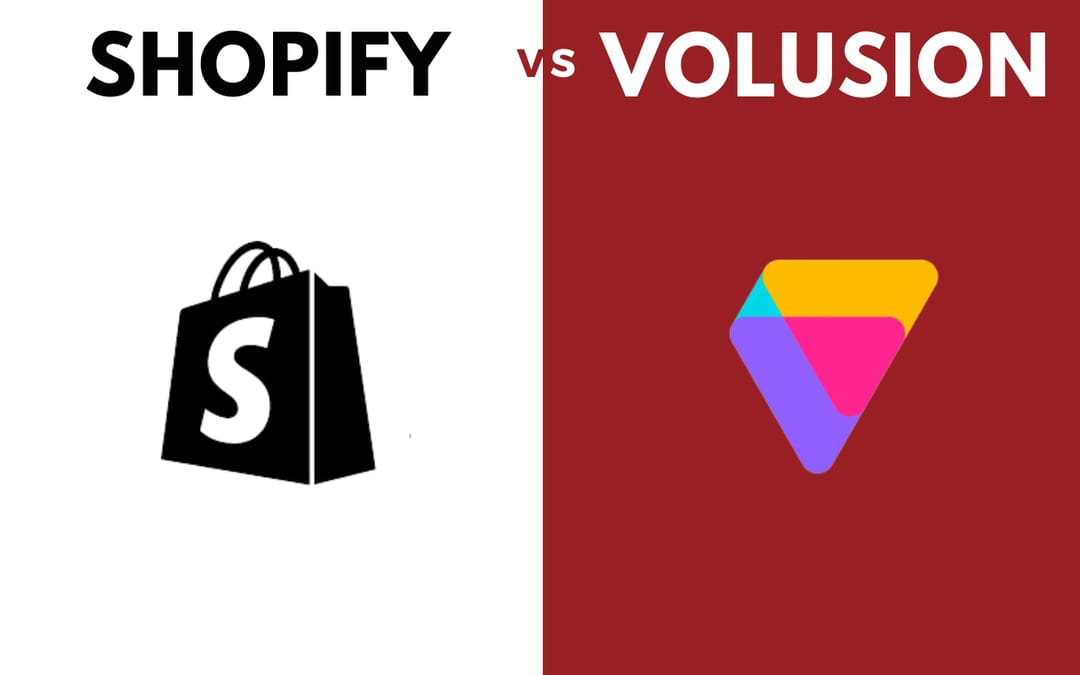
SEO vs. Paid Advertising: Choosing the Best Investment for Your Shopify Store

You’ve just launched your new online store. You’ve invested a lot of time and effort into creating stunning products and an attractive website. But now, you face a critical decision: how to drive traffic to your store. You understand the importance of online visibility but are torn between focusing on SEO (Search Engine Optimization) or investing in paid advertising. This blog post will compare SEO vs. paid ads for Shopify, helping eCommerce store owners like you decide which approach is best for their business.
Need expert guidance? Contact us at InteractOne for personalized support.
In this article, InteractOne (a leading eCommerce and Digital Marketing agency) will advise on the following:
- Quick Recap: SEO and Paid Advertising
- Pros and Cons: SEO vs. Paid Advertising
- SEO vs. Paid Advertising: Which is Right to Generate Traffic to Your Shopify Store?
- Decision Factors for Shopify Store Owners
- Best of Both Worlds: Combine SEO with Paid Advertising for Maximum Impact
- Practical Tips and Best Practices
- Recommended Apps and Tools for Better SEO and PPC on Shopify
- Final Advice: When to Use Paid Search vs. Organic SEO
Quick Recap: SEO and Paid Advertising
Let’s get started by recapping the difference between SEO and paid or PPC keywords for Shopify stores.
What is SEO?
SEO (Search Engine Optimization) involves optimizing your website to rank higher in search engine results pages (SERPs). When your store appears at the top of organic search results, you’re more likely to attract organic traffic.
There are two key elements to SEO. On-page SEO includes optimizing your content, keywords, meta tags, and product descriptions. Off-page SEO involves building backlinks from other reputable sites and leveraging social signals to improve your site’s authority.
What is Paid Advertising?
Paid advertising, also referred to as search engine marketing (SEM), pay-per-click (PPC), and search advertising, involves paying for ads to appear on search engines, social media platforms, and other websites. There are different types of paid ads with different benefits. Here are a few examples:
- PPC (Pay-Per-Click): You pay each time someone clicks on your ad.
- Display ads: Visual ads that appear on various websites.
- Social media ads: Ads that appear on platforms like Facebook, Instagram, and Twitter.
Pros and Cons: SEO vs. Paid Ads
| Aspect | SEO | Paid Campaigns |
| Advantages | – Cost-effective in the long run – Builds trust and credibility – Higher ROI over time | – Immediate visibility and traffic – Highly targeted audience reach – Measurable results and fast – Feedback loop |
| Challenges | – Time-consuming to see results – Requires ongoing effort and updates – Competition for top rankings | – Costly, especially for competitive keywords – Results stop when the budget stops – Potential for ad fatigue and audience saturation |
SEO vs. Paid Advertising: Which is Right to Generate Traffic to Your Shopify Store?
Now let’s put these two marketing methods head to head to see the key differences.
Cost Analysis
The cost of SEO and paid campaigns is probably the first factor you’ll want to consider. SEO requires an upfront investment in content creation and optimization, but it has lower ongoing costs. In contrast, a paid digital ads campaign demands a continual budget, and costs can quickly escalate, especially in competitive markets. Over the long term, SEO tends to be more cost-effective, whereas advertisements can provide immediate results, but at a higher ongoing expense.
Time to Results
The timeframe for results also differs greatly between the two strategies. SEO can take months to show significant outcomes, depending on the competitiveness of your keywords and industry. On the other hand, paid media can start driving traffic almost immediately once the campaign is launched. This means that while paying for ads are great for quick traffic and sales, SEO is better suited for long-term sustainability.
Sustainability and ROI
While we’re on the subject, let’s dive further into sustainability, as well as return on investment (ROI). SEO offers long-term benefits and sustainability; once you achieve good rankings, maintaining them requires relatively low-effort and cost. In contrast, the ROI from branded advertising can fluctuate as it depends on continued investment. Typically, SEO provides a higher ROI over time because the cost per acquisition decreases, whereas the cost of paid ads remains constant or can even increase.
Scalability
As a Shopify store owner, growing your business is probably one of your top priorities. SEO can be scaled by expanding your content and backlink profile, allowing for organic growth. Marketing ads, however, can be scaled more rapidly by increasing your budget and refining targeting options. This makes paid ads a flexible tool for quick scaling, while SEO requires a more gradual approach.
Decision Factors for Shopify Store Owners
Now that you understand the crucial difference between the two strategies, it’s time to decide which is the best investment for your Shopify store. Here’s what you should ask yourself.
Budget Constraints
Assess your financial capacity and allocate resources accordingly. If funds are limited, SEO might be more viable in the long run, while paid ads can provide quick wins if you have the budget.
Business Goals
Align your strategy with your short-term and long-term business objectives. If you need immediate traffic and sales, paid advertising is the way to go. For long-term growth and sustainability, invest in SEO.
Market Competition
Analyze the competitive landscape in your industry. In highly competitive markets, paid ads can offer an edge and faster results, while SEO might require more time and effort to see significant gains.
Brand Stage
Consider the maturity of your brand. Startups might benefit more from the quick visibility provided by paid ads, whereas established brands can leverage their existing authority and focus more on SEO.
These basic questions and considerations can help you understand which strategy aligns with your priorities and needs.
Best of Both Worlds: Combine SEO with Paid Advertising for Maximum Impact
Now that we’ve explored the benefits of both paid and organic SEO strategies, what if we told you that you don’t have to choose just one?
By combining SEO and paid search, display, and social media ads, you can leverage the strengths of both approaches for maximum impact. Paid ads can drive immediate traffic while your SEO activities are ramping up, providing quick visibility and potential sales. Additionally, paid ads can be used to retarget visitors who initially found you through organic search, thereby increasing conversion rates.
Moreover, the insights gained from your SEO efforts can be incredibly valuable for optimizing your paid advertising campaigns. Use keyword data and other SEO insights to refine your targeting and improve the effectiveness of your ads. This integrated approach ensures that your marketing strategies work together harmoniously, enhancing overall performance and achieving better results.

Practical Tips and Best Practices
No matter which approach you choose, here are some quick wins you can get for each strategy. This should get you started.
Optimizing SEO
Start by optimizing your product descriptions to ensure they are unique, engaging, and informative, incorporating search relevant keywords naturally. Conduct thorough keyword research and use these keywords strategically in your product titles, descriptions, meta tags, and URLs, updating your list based on performance and trends.
You should also focus on acquiring backlinks from reputable websites within your industry by creating shareable content, such as blog posts and videos. We have a complete guide to help you add backlinks to your store.
Maximizing Paid Digital Ad Campaign ROI
Set clear goals for your ad campaigns, defining specific, measurable objectives such as increasing traffic or boosting sales. Make sure to align your strategy with your overall business goals.
Regularly monitor key metrics like click-through rates (CTR), conversion rates, cost per click (CPC), and return on ad spend (ROAS). You can use analytics tools to gain insights into your campaign performance and make data-driven adjustments. Try testing different ad formats, headlines, and calls-to-action (CTAs) to find what resonates best with your audience.
Recommended Apps and Tools for Better SEO and PPC on Shopify
We’ve curated a selection of apps to bolster your store’s SEO and PPC efforts, with each one designed to deliver substantial improvements.
For SEO on Shopify:
- AI ChatGPT Description: Generate optimized product descriptions, making them unique and engaging.
- SEO Image Optimizer: Optimize image file sizes, add alt text, and improve load times and accessibility.
- Schema Plus for SEO: Implement structured data to enhance rich results like snippets, reviews, and FAQs.
- Yotpo: This end-to-end eCommerce marketing platform offers several solutions to help online businesses increase customer engagement, trust, and sales. Their Product Reviews feature collects, manages, and displays customer feedback. Additionally, their Question & Answer widget allows visitors to ask about products and view popular questions and answers, helping build trust and provide potential customers with the information they need to make informed purchasing decisions.
For PPC on Shopify:
- Feedonomics: Enrich your merchant center data feeds to improve the performance of your shopping ads.
- Google Reviews Plus: Collect and display Google seller reviews to build trust with potential customers.
- AdRoll: Implement remarketing campaigns to re-engage visitors who have shown interest in your products.
- Klaviyo: Convert paid visitors into email subscribers and send targeted remarketing and abandoned cart emails.
These apps can streamline your marketing efforts and enhance the effectiveness of your SEO and PPC strategies, ultimately driving more traffic and sales to your Shopify store.
“Both SEO and Paid Advertising have unique advantages and challenges. For Shopify store owners, the best approach often involves a combination of both strategies.”
Final Advice: When to Use Paid Search vs. Organic SEO
Both SEO and Paid Advertising have unique advantages and challenges. For Shopify store owners, the best approach often involves a combination of both strategies. By leveraging the strengths of SEO for long-term growth and paid advertising for immediate results, you can create a balanced marketing strategy that maximizes your store’s potential.
Evaluate your unique needs, budget, and goals to determine the right mix of SEO and paid advertising for your Shopify store. By integrating both strategies, you can achieve both short-term wins and long-term success.
Ready to elevate your Shopify store’s online presence? Let InteractOne be your partner in success. As a Shopify agency with an expert team and extensive experience, we can help you master both SEO and paid advertising strategies for maximum impact. Contact us today to schedule a consultation and start transforming your Shopify store.
Drop Us a Line At:
Or, if you prefer an old-fashioned phone call:
Phone (USA): (513) 469-3362
Proudly headquartered in Cincinnati, Ohio

































